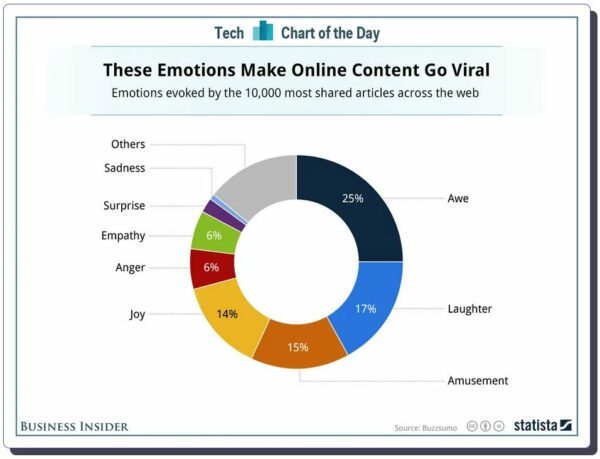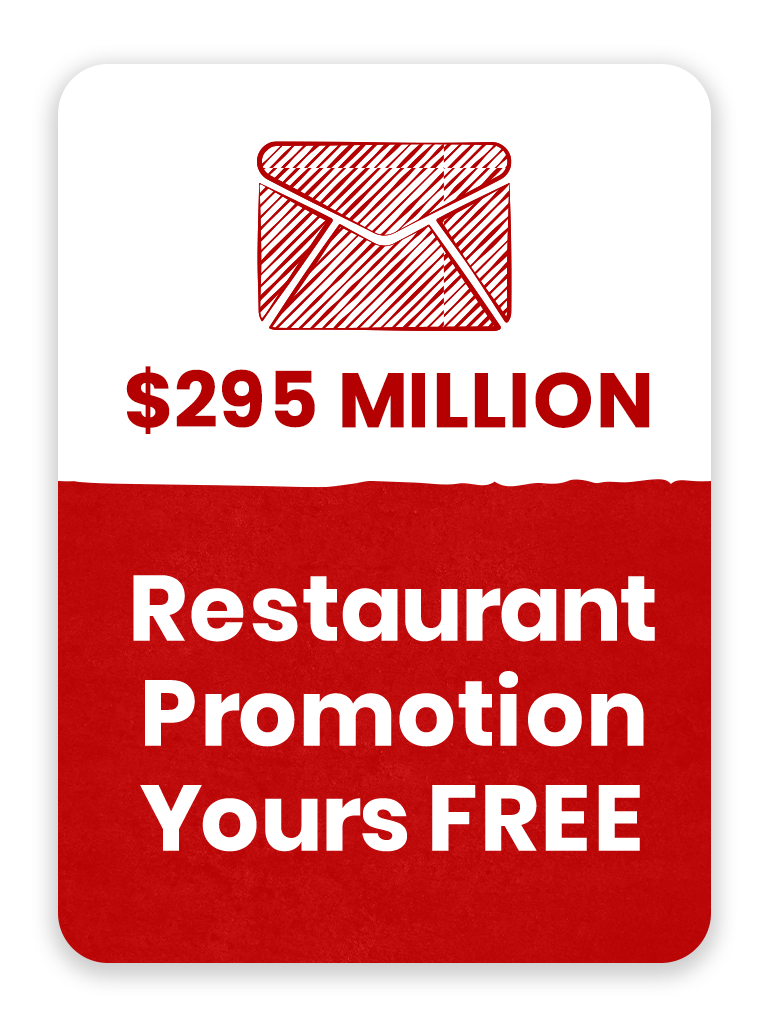Remember THE dress?
A photograph went viral in 2015. No one could agree if the dress was black and blue or white and gold. It was crazy.

There are all sorts of similar events that have happened since. Some attract attention for a specific cause or fundraising efforts, and many are silly challenges and dances that people emulate and become common among the entire population.
Then there are the negative events. A celebrity has nude photos revealed online, a politician gets roasted for inappropriate behavior years ago, or a college student makes a comment online that loses them a scholarship.
Like individuals, a viral event can make or break your small business. It can be a huge positive boost or cause a lot of damage that is difficult to recover from. The key to weathering the storm is two-way communication with your customers and attention to what people say about you online. You will come out ahead if you can solve problems quickly and effectively.
What Does “Going Viral” Mean?

The term “going viral” refers to when a piece of content, such as a video, image, or article, is shared widely on the internet. A runaway train of sorts. As more and more people share it, the likelihood that they will know someone else who has shared it increases, leading to an even wider distribution.
For businesses, going viral can be a double-edged sword. On the one hand, if a company’s content is shared widely in a positive light, it can lead to increased exposure and profits. On the other hand, if a company’s content goes viral for the wrong reasons – such as an embarrassing blunder – it can lead to widespread criticism and damage to the brand.
What Is Viral In Social Media?
The term “going viral” refers to when a piece of content, such as a video, image, or article, is shared widely on the internet. A runaway train of sorts. As more and more people share it, the likelihood that they will know someone else who has shared it increases, leading to an even wider distribution.
For businesses, going viral can be a double-edged sword. On the one hand, if a company’s content is shared widely in a positive light, it can lead to increased exposure and profits. On the other hand, if a company’s content goes viral for the wrong reasons – such as an embarrassing blunder – it can lead to widespread criticism and damage to the brand
What is viral in social media?
Some examples of viral social media include the ALS Ice Bucket Challenge, the Harlem Shake, and The Dress. These videos or images were shared so widely that it became virtually impossible to know where they originated. As more and more people shared it, the likelihood that they would know someone else who had shared it increased, leading to an even wider distribution.
If you share viral social media content through your channels, it is essential to ensure that the content is aligned with the company’s culture and message. The content should be funny, interesting, or inspiring and reflect the company’s values. By sharing quality content that resonates with customers, businesses can create positive associations with their brand and encourage customers to share the content with their friends.
How Can You Make Something Of Your Own Go Viral?

It might take a magic wand, perfect timing, and a bit of luck, but here are some tips on trying to make content that spreads through your followers and beyond. There is no surefire recipe for creating viral content, but there are a few things you can do to increase the chances of your content being shared more widely.
- Make sure the content is high quality and relevant to your target audience. The content should be funny, interesting, or inspiring and reflect the company’s values. By creating quality content that resonates with customers, businesses can positively associate their brand and encourage customers to share the content with their friends.
- Share content organically. Tag friends and followers in your posts, use relevant hashtags, and post on appropriate forums and groups. The more you promote the content genuinely, the more likely people are to share it. Connect the content to things people are already talking about; an event, like the Olympics or a Nascar race that is relevant to your target, a community event, or something being talked about already in social media – a celebrity wedding or a popular Netflix show.
- Ask customers to share the content. Incentivize them with contests or special offers. Make it easy for them to share by providing social media buttons or links. You can widen the distribution and reach even more people by encouraging customers to share the content.
- One fun way to take advantage of it, instead of sharing the original content, is to create something of your own that emulates the original. Create your own ice-related challenge or post a picture of one of your products asking a question about it. People love quizzes and polls, tricky questions, and it offers another way to engage with you and build connections. Using humor will go a long way to making people share
Here’s a short list of things to consider as you create content:
- Write a great eye-catching headline, a unique “hook.”
- Allow easy commenting and sharing.
- Be authoritative, trustworthy.
- Use a list: the top X ways to Y.
- Tap into a trend.
- Add images, infographics or videos, and bright colors.
- Make it short.
- Target a specific emotion (see chart below.)
- Appeal to your target audience.
- Make it interactive (quizzes, polls, questions.)
- Find a like-minded influencer/blogger to share your content.

In the end, you’ll never know what will get more likes, views, and shares – so the secret is continuously creating and adding content to your different platforms. It can be the same on all of them; it’s essential to post regularly to build the connection.
Managing a negative viral event can be more difficult for businesses, as it requires quick response and the ability to access two-way communication with customers to solve any problems that may arise.
Step #1: You HAVE To Know What They’re Saying About You

The first step is to monitor what people say about your business online, as what others say about you is more powerful than what you say yourself. This means reviewing ALL of the sites where your business is listed, and people can make comments. Sites like:
- Trip Advisor
- Yelp
- YouTube
- Tiktok
- Google Reviews
- Industry-specific sites
Pro tip: Know that people use hashtags to “file” their posts. Think of one that might be used for your business, the most likely being #yourbuisnessname. You can search the platforms for this tag to find related posts that were posted by others, like your customers and staff. Most of them will be positive and supportive….but maybe it’s an angry customer or a disgruntled or drunk employee thinking they are funny.
It also means “Googling” your business to see if anyone is writing or talking about you. There are so many new agencies out there looking for a way to get clicks to their site that they’ll latch onto anything remotely interesting.
Step #2: Use Social Media and Digital Marketing For GOOD, Not BAD

Once you’ve read that, it’s easy to think, “I’ll just avoid it altogether, stay off the social media platforms and not worry about it.”
Big Mistake! Social media and digital marketing are important for businesses of all sizes. In today’s digital age, it is essential to have a strong online presence to reach both existing and potential customers. Social media platforms provide an easy way to connect with customers and build relationships. They give you a great space to demonstrate what you offer, why you are better than the other options, share your culture and style and sell your products and services.
Additionally, digital marketing channels such as email marketing and paid search allow businesses to target potential customers based on their interests and demographics. As a small business, allocating resources toward social media and digital marketing is crucial to staying competitive and growing your business.
Step #3: What If Someone Goes Negative About Me?

Let’s start with your online review sites. Online reviews are essential for small businesses because they help to build trust and credibility with potential customers. People will believe what others say about you more than what you can say. It’s like getting a recommendation from a friend that you trust.
But no matter how great you are, eventually, negative reviews will appear. People will take the negative ones with a grain of salt when the positive ones outweigh the negative ones. That’s a reason to always ask happy customers for more reviews online; the negative ones will disappear.
Pro Tip: If something goes viral, even if it is only within your community, the first step is to have established the habit of two-way communication with your customers to solve any problems and offer appreciation or thanks for constructive feedback. This part of reputation management is one of the most critical aspects of doing business. It can be the difference between growing your sales and losing customer faith.
Once you have established an online brand reputation and are actively involved on your review sites, if someone writes something particularly horrible or posts pictures that go viral in a negative way, you can move in to manage the situation quickly and effectively.
Examples might be an angry ex-employee who wants to tarnish our reputation by posting a bad review or someone spots a rat by your dumpster and decides it needs to be complained about online.
If the negative content is posted on a site you can’t access, find out where it is to determine how to proceed. In some cases, you may be able to have the content removed, especially if it is inaccurate. If people begin sharing or commenting on it through your channels, you can respond professionally and respectfully. Tell the truth, don’t get defensive, and share how you solve the problem if it is legitimate.
What others say about you is far more powerful than what you say yourself. That’s why online comments are so valuable when they are positive. By monitoring your online reputation and responding to positive and negative reviews, you can ensure that your business provides excellent customer service and attracts new customers.
Ok, The Good News
Viral content doesn’t last forever. The internet moves fast. Unless you are of Kim Kardashian status, and depending on the severity of the issue, negative viral content won’t last for long, although it will feel like it if you get a sudden hit of negative viral attention.
Vox.com says their data shows a window of about two weeks. And we suggest that it’s likely shorter than that if you have an effective online review management strategy.
Wondering what your new customers see when they Google You?
Want a complete Online Reputation scorecard for you and your biggest competitor to see how you stack up?
Want a detailed plan for improving your online rankings and status and getting more 5 Star reviews AND use your reputation to become the dominant business in your local market in your industry?
If you answered YES to any of these, click the button below and sign up for a FREE Reputation Power Meeting with one of my DFY Reputation Marketing Superstars. It’ll be the best 30 minutes you spend this year. A $297 value, but since you’re on our list, we’ll do it for FREE for ya!


Michael Thibault
Known as “The Done For You Marketing Guy for Restaurants.” International Speaker on Restaurant Marketing. Published contributing author of 4 Marketing Books. Industry expert on Google Searches and Review Sites. Recovering Independent Restaurant Owner and Caterer of over 21 years. And, all-around good guy.





